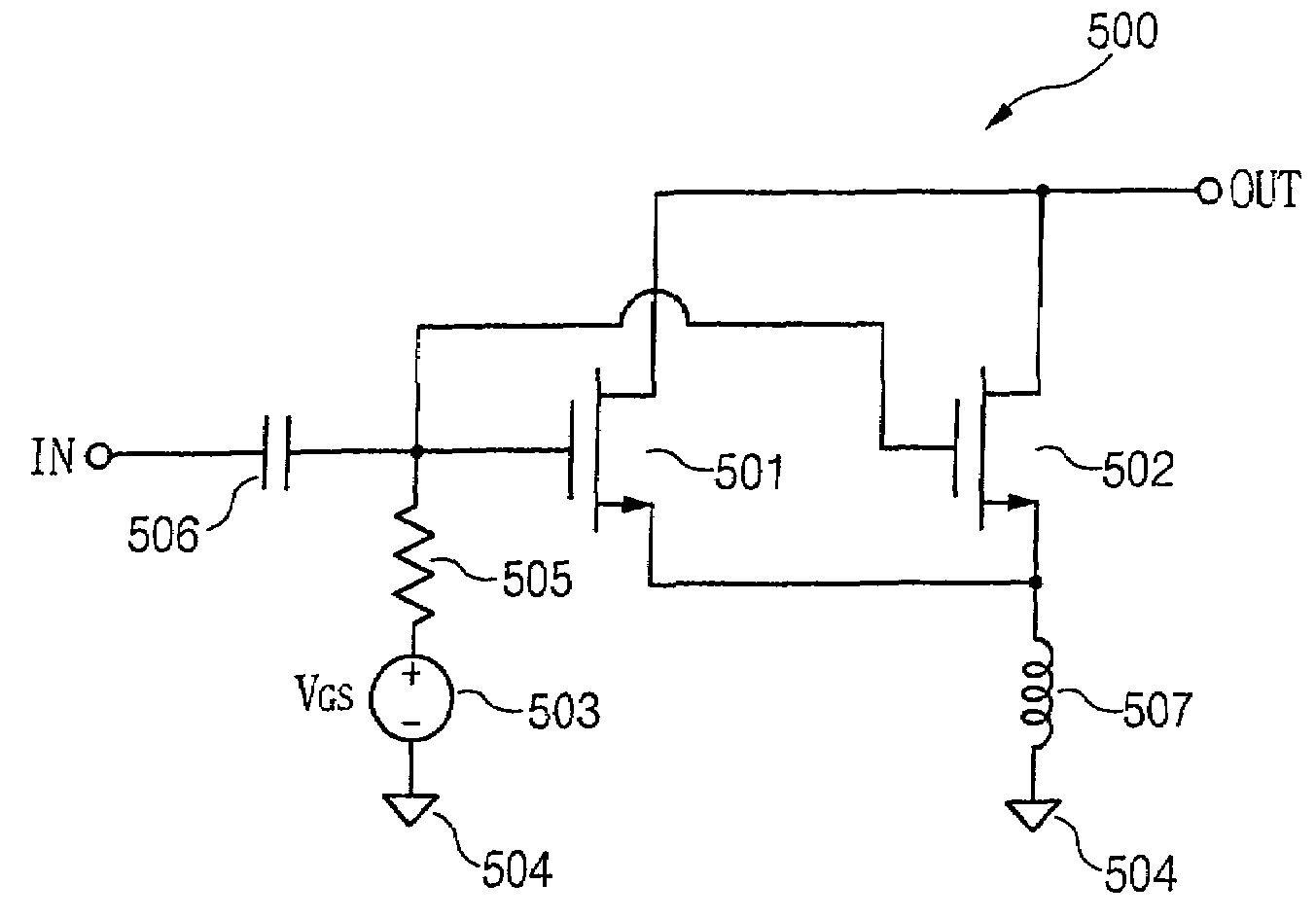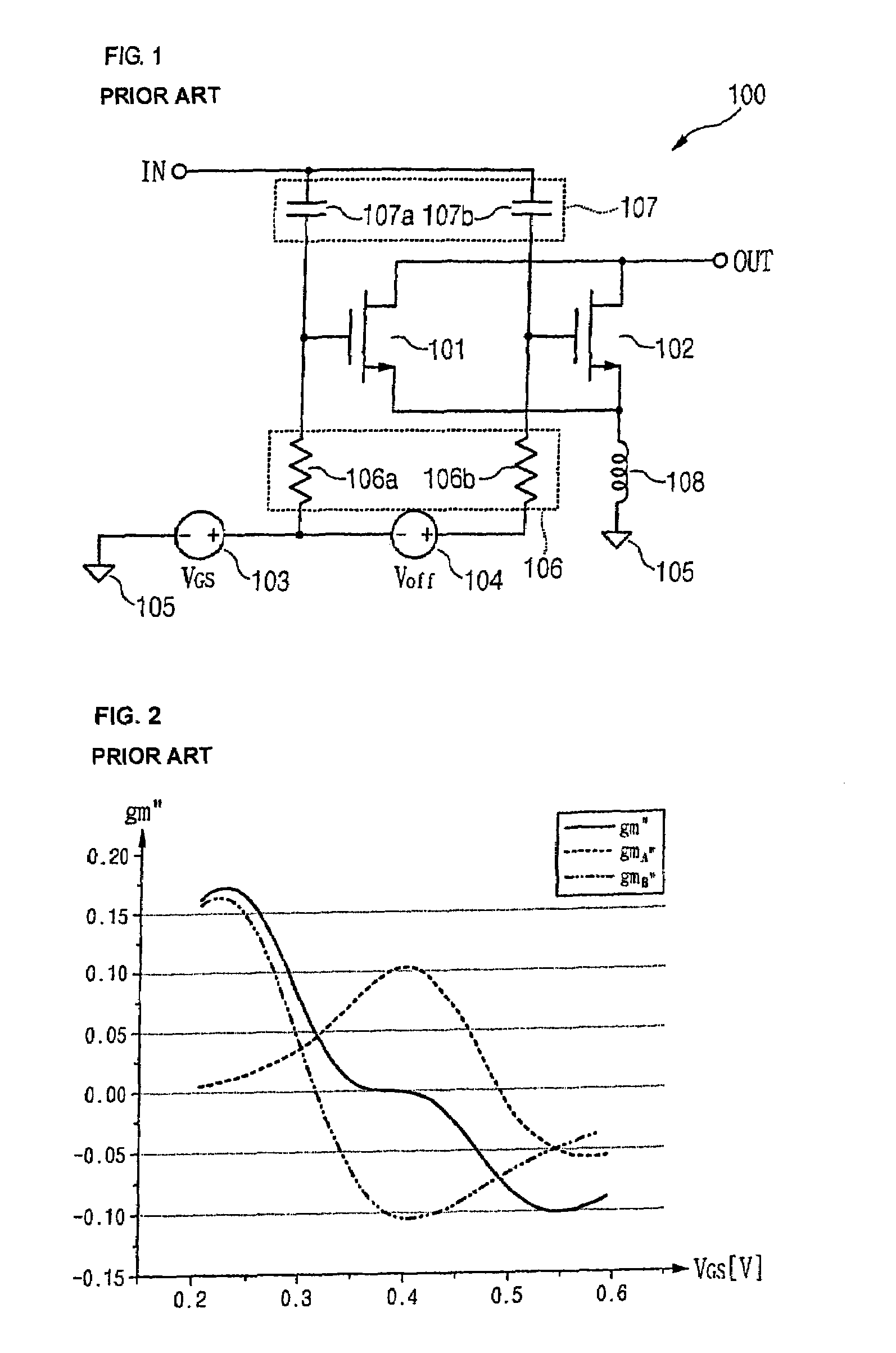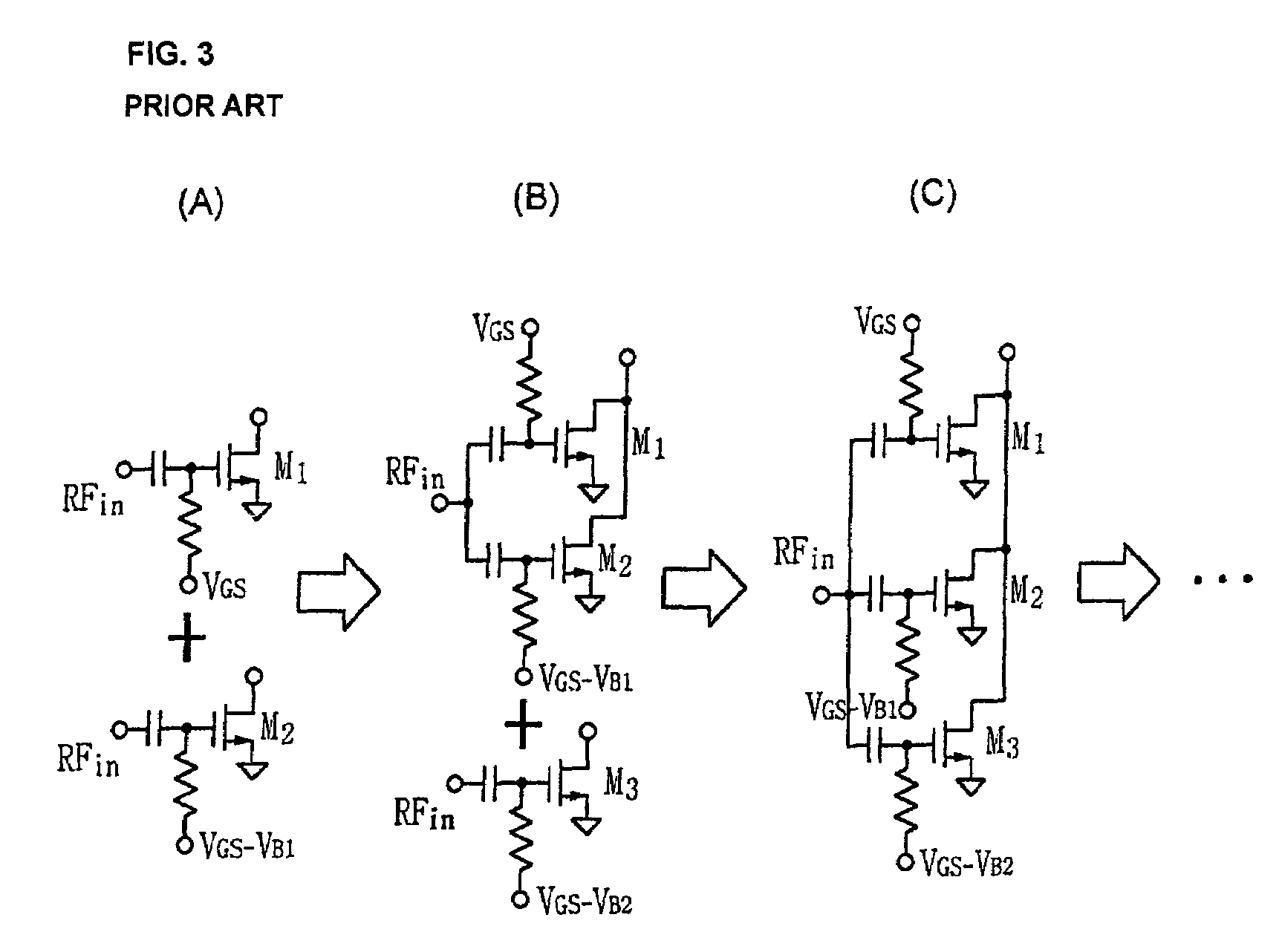Derivative superposition circuit for linearization
a superposition circuit and linearization technology, applied in the field of derivative superposition circuits for linearization, can solve problems such as the increase of phenomenon, and achieve the effects of stable linearization, reduced overall area of the circuit, and easy construction
- Summary
- Abstract
- Description
- Claims
- Application Information
AI Technical Summary
Benefits of technology
Problems solved by technology
Method used
Image
Examples
Embodiment Construction
[0036]Reference will now be made in detail to the embodiments of the present general inventive concept, examples of which are illustrated in the accompanying drawings, wherein like reference numerals refer to the like elements throughout. The embodiments are described below in order to explain the present general inventive concept by referring to the figures.
[0037]Hereinafter, a preferred embodiment of the present invention will be described in detail with reference to the accompanying drawings.
[0038]FIG. 5 is a circuit diagram showing a derivative superposition circuit 500 according to the present invention. As shown in FIG. 5, the derivative superposition circuit 500 includes a first active element 501 and a second active element 502 having a complementary characteristic with respect to the first active element 501.
[0039]The first active element 501 is provided with a gate, source, and drain. In accordance with the magnitude and polarity of a voltage applied to the gate and source...
PUM
 Login to view more
Login to view more Abstract
Description
Claims
Application Information
 Login to view more
Login to view more - R&D Engineer
- R&D Manager
- IP Professional
- Industry Leading Data Capabilities
- Powerful AI technology
- Patent DNA Extraction
Browse by: Latest US Patents, China's latest patents, Technical Efficacy Thesaurus, Application Domain, Technology Topic.
© 2024 PatSnap. All rights reserved.Legal|Privacy policy|Modern Slavery Act Transparency Statement|Sitemap



